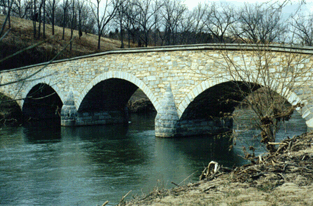Tactics
 This
section contains information that the player may find helpful in
playing the game. The key issue is to understand the particular
tactics associated with the Civil War battles. During this time
period, the linear tactics that had evolved during the 18th
century were further refined through the use of artillery and
cavalry. This results in a special situation of having three very
unique arms: infantry, artillery, and cavalry, each with strengths
and weaknesses. Understanding how to employ each of these to their
maximum effect is the key to being a good Civil War commander.
This
section contains information that the player may find helpful in
playing the game. The key issue is to understand the particular
tactics associated with the Civil War battles. During this time
period, the linear tactics that had evolved during the 18th
century were further refined through the use of artillery and
cavalry. This results in a special situation of having three very
unique arms: infantry, artillery, and cavalry, each with strengths
and weaknesses. Understanding how to employ each of these to their
maximum effect is the key to being a good Civil War commander.
Maintain an effective reserve. You will need a good reserve late in the battle to either provide the "knock-out punch" against the enemy, or to save your own army from destruction. It is a good idea to keep either a Brigade from each Division, or a Division from each Corps, in reserve to have some forces you can deploy as needed.
Be prepared for routs. As your forces participate in combat, their fatigue will increase and ammo problems will develop. Keep an eye on the condition of your forces as these problems can eventually cause some very extensive routing. Be prepared for this eventuality and have some fresh forces in reserve that you can commit.
Avoid frontal attacks against prepared positions. The firepower of Civil War weapons was such that frontal attacks across open ground or against prepared positions most often failed. This tactic will only have a good chance of succeeding if you are attacking forces that have been worn down by previous fighting. If this is the case, then you may be able to cause a break in their line and the attack may succeed.
Likewise, avoid frontal attacks against positions having good artillery. Like the fellow said at Shiloh: "There ain’t no good way of charging artillery". Artillery is best attacked from the flank where you may be able to approach it without being fired upon and successfully melee against it. If you make a frontal attack against artillery, then you will find out just how effective canister charges fired from large bore cannons can be.
Use your cavalry for scouting and screening of your flanks, but avoid using them as "mounted infantry" unless they are equipped with fast firing weapons. Cavalry units are generally too small and too precious to use them for real fighting against enemy units other than other enemy cavalry. Only if you have cavalry such as the Union cavalry with fast firing weapons will you be able to hold your own.
Use skirmishers in obstructed terrain to scout for the enemy and to protect yourself from enemy attacks. Particularly when the terrain consists of forests and other obstructed terrain, you can use skirmishers to determine the location of the enemy before you actually encounter them. This will keep you from suffering large number of casualties from enemy fire. Your skirmishers will also slow the enemy advance down and give you time to prepare for it.
Watch your flanks, especially when the Isolation Optional Rule is in effect. The most effective way of defeating an enemy force is to surround them. Historically when this happened, such as at the Hornet’s Nest at Shiloh, the surrounded forces would surrender rather than fight to the death. Even individual units need to have flank support as they may be cut off using enemy Zones-of-Control, and unable to save themselves. The good use of linear tactics will protect your forces and allow them to use their firepower to maximum effect.
